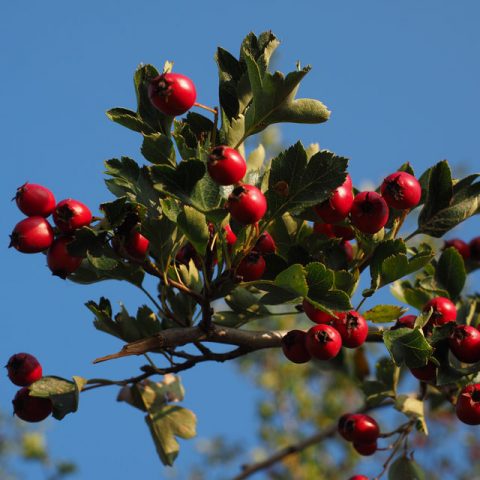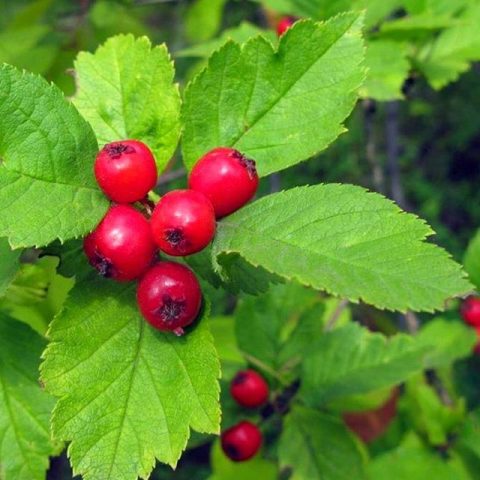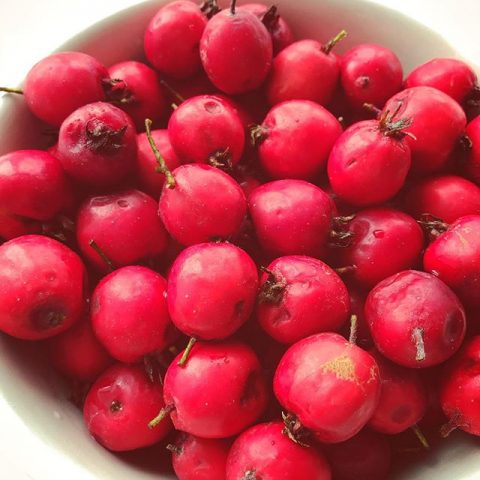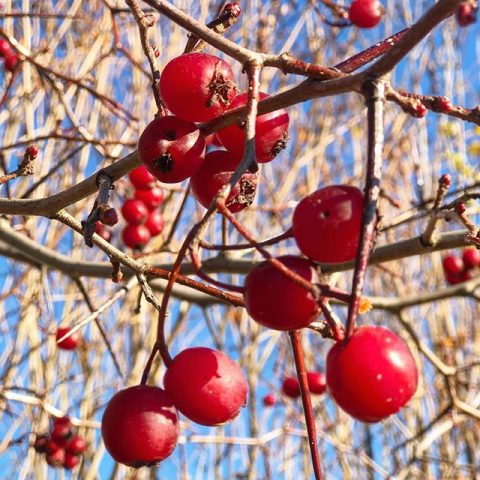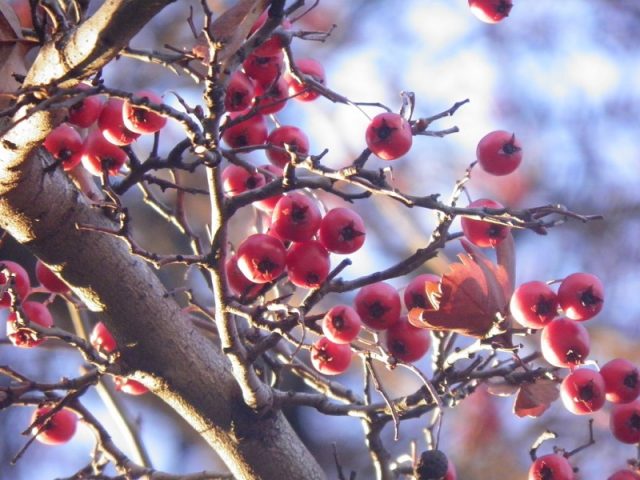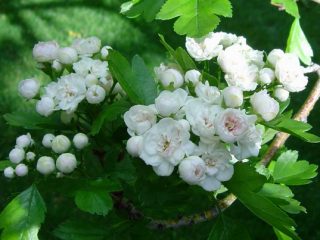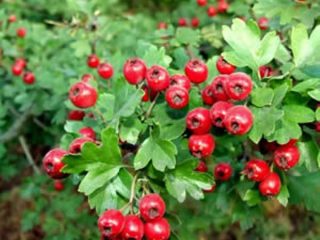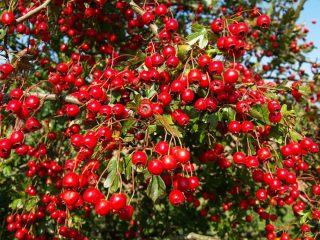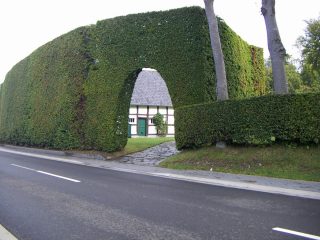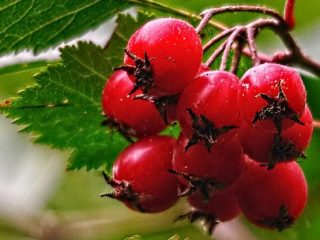Content
People began to collect hawthorns quite a long time ago, and collecting not only berries, but also inflorescences, bark and leaves is popular. The plant attracts close human attention for its taste and medicinal properties.
Where does hawthorn grow in Russia?
About 47 species of this tree grow on the territory of the Russian Federation. Only a few plant species are popular.
- Blood red hawthorn (Crataégussanguínea)... The second name of the plant is Siberian hawthorn. Natural growth areas are the East Siberian and West Siberian regions, Transbaikalia and the territory of the European part of the Russian Federation. In these regions, trees can be found in glades and edges of dry rare forests, in steppes and river floodplains.
- Altai hawthorn (Crataégusaltaíca)... In natural conditions, you can find the species in the East Siberian region (Republic of Tuva). It can grow singly or in group plantings. Prefers rocky areas, river floodplains and chalk hills.
- Daurian hawthorn (Crataégusdahuríca)... Growing regions - Southeast Siberia and the Far East. In natural conditions, trees of this species can be found on the banks of rivers, on flooded meadows, forest edges, in the undergrowth of mixed and deciduous forests, on the slopes of mountains.
All of the above species are not particularly whimsical to the ground. For better development, trees are suitable for alluvial, pebble, sandy soils. There are frequent cases of successful growth in poorly cultivated soil. The tree gives more preference to sunny areas and tolerates light shading.
Strongly acidic and waterlogged soils, places with close occurrence of underground rivers are absolutely not suitable for trees. Coastal areas flooded with melt water and low-lying areas with stagnant cold air currents are also not suitable places for growing this crop.
Large-anthered hawthorn (Crataégusmacracantha).
Under natural conditions, it grows only in the North American region, but as a cultivated species, it is most widespread in the European part of the Russian Federation (Moscow region, Ural, regions of the Middle Belt). You can meet tree planting on the slopes of mountain ranges and in the coastal zones of lakes and rivers. Prefers fertile, moderately moist, drained, limestone-rich soil. It is extremely difficult to tolerate strongly acidic, clayey and boggy substrate. Loves well-lit, sunny places and does an excellent job with light shading.
Hawthorn Maximovich (Crataégusmaximowiczii).
The species is common in the Far East and regions of Eastern Siberia. Due to the growing regions, this species was named in memory of the Russian botanist Karl Maksimovich, who studied new flowering plants of the Amur and Ussuri regions. Natural growing conditions - on wet meadows, flooded valleys, dry mountain slopes, river banks, forest edges with oak and broad-leaved (sparse) plantations.
The plant prefers fertile, moderately moist soil, loam, neutral or slightly acidic reaction. Loves light and does a great job with light shading.
Common hawthorn (Crataéguslaevigata).
The distribution area of this species is the entire territory of Europe, but for the middle zone and the southern regions of the Russian Federation, the popularity of growing a tree is due not only to the fruits, but also to the decorative forms of the plant. It includes several subspecies in its appearance, distinguished by the shapes and colors of the leaf plate and peduncles.
Under natural conditions, it grows on the edges of pine or deciduous forests, river banks, talus and in thickets of bushes. The view is picky about lighting and absolutely cannot stand shading. Prefers only fertile, well-drained and poorly moistened soils.
When the hawthorn ripens
Blossoming of trees begins in the second decade of May and can last until the end of June. And only in the large-anthered (large-anthered) species, flowering lasts only 10 days.
If you need to collect hawthorn flowers, then you should carefully consider the flowering time frame and stop collecting after 6 days from the beginning of flowering.
Ripening of hawthorn berries, regardless of its type, occurs from August to September, in rare cases to October.
Early spring is the time to harvest the hawthorn bark. It is during this period that the active movement of the sap inside the plant begins.
Sometimes hawthorn foliage is also used for medicinal purposes, which must be collected before flowering begins and can be continued until its end.
When to harvest hawthorn fruit
It is better to collect hawthorn fruits for the winter before the onset of the first frost. Frozen berry is absolutely not suitable for long-term storage, but it is perfect for processing.
The best time to harvest hawthorn fruits is on a dry, calm afternoon. During this period, the morning dew has already evaporated, and the fruits have dried up. Only dry, not overripe and not spoiled by birds berry is the best material for long-term storage.
When to collect hawthorn in the Moscow region
In the conditions of the Moscow region, most often the first frosts occur already on September 20-22. Therefore, the hawthorn fruit can be harvested already in August and September. This harvest period is facilitated by a milder climate and more sunny days. In any case, fruits that are firm to the touch and without damage are suitable for collection. It is better to leave soft berries to the birds for the possibility of future breeding.
When to collect hawthorn in the Middle lane
Central Russia is characterized by the appearance of the first frosts from the second half of October (most often the first frosts are expected on October 14 - the feast of the Intercession of the Most Holy Theotokos). Based on these climatic features, the collection of fruits should be completed before this time.
When to collect hawthorn in the Urals
The climatic features of the Urals are the first September frosts. You need to have time to collect the fruits before they are slightly frozen. Hawthorn is harvested in the Urals in August.
When to pick hawthorn berries in Siberia
Siberia is the coldest region in Russia with short summers and long winters. Based on these climatic features, the collection of fruits begins precisely in August. There are frequent cases of berry picking in the last decade of July (depending on summer weather and the number of sunny days).
How to harvest hawthorn
For the correct collection of fruits, you must follow the following rules:
- Protect your body with tight clothing. The hawthorn has very long and sharp needles that can cause severe injury.
- You can start collecting hawthorn fruits from the lower tier, gradually moving to the upper branches.
- Only whole berries, not spoiled by birds, without mold, are suitable for collection.
- You can pick some fruits, but it is better to pick the berry together with the shield.
- The collection is best done after the foliage has fallen off. Under such conditions, the berries are clearly visible.
- Overripe fruits can be harvested, but they are not suitable for storage. The best use for overripe berries is to make compote, jam or jam.
- A basket like a mushroom basket is useful for collecting.
- It is better to pick fruits in the depths of the plantation, away from highways and industrial enterprises.
- You do not need to pick absolutely all the berries from the tree. They will serve as food for birds in the winter.
Fruit pickers can be used to pick berries. How to properly collect hawthorn with their help is shown in the video:
Conclusion
Collecting hawthorn is not only possible, but also necessary. The berry contains a huge amount of vitamins and minerals. This has a beneficial effect not only on the taste, but also on the medicinal properties of the berry.

